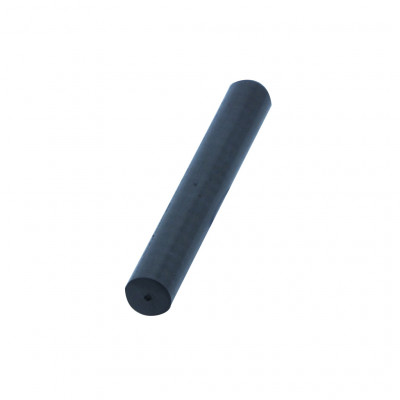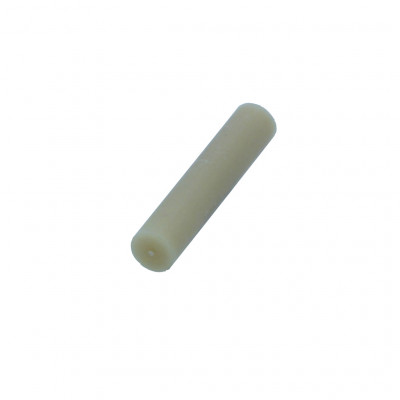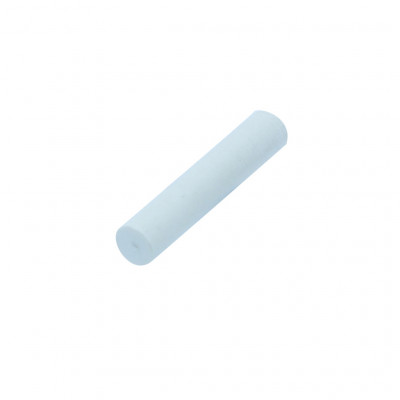Search products
Categories
Search product
Categories
PVDF
Brand: 
- Extremely high maximum operating temperature in air
- Good mechanical strength, creep resistance and stiffness
- Excellent chemical and hydrolysis resistance
- High toughness, even at low temperatures
- Good electrical insulation properties
Interested in this product?
Polyvinylidene fluoride
PDVF is a non-reinforced, highly crystalline fluoropolymer combining good mechanical, thermal and electric properties with excellent chemical resistance.
This is a versatile material whose properties make it specifically suited for the manufacture of components in the chemical, petrol, metalworking, pharmaceutical, food, paper, textile, and nuclear industries.
Specifications
- High maximum operating temperature in air (+150 °C continuously)
- Good mechanical strength, creep resistance, and stiffness (better than other fluoropolymers)
- Excellent chemical and hydrolysis resistance
- High toughness, even at low temperatures
- Good electrical insulation properties
- Good wear resistance and good sliding properties
- Good dimensional stability
- Physiologically inert
- Remarkable resistance to UV radiation and weathering
- Low intrinsic flammability
- Good resistance to energy-rich radiation (better than other fluoropolymers)
| Properties | ISO / (IEC) standard | Unit of measurement | Value |
| General properties | |||
| Colour | natural | ||
| (white) | |||
| Density | 1183-1 | g/cm3 | 1.78 |
| Water absorption: | |||
| - after 24/96 h immersion in | 62 | mg | 1/3 |
| water at 23 °C | |||
| 62 | % | 0.01/0.03 | |
| - at saturation in air of 23 °C / 50% RH | -- | % | 0.05 |
| - at saturation in water of 23 °C | -- | % | 0.05 |
| Thermal properties | |||
| Melting temperature | 11357-1/-3 | °C | 175 |
| Glass transition temperature | 11357-1/-2 | °C | -- |
| Thermal conductivity at 23 °C | - | W (K.m) | 0.19 |
| Average coefficient of linear thermal expansion: | |||
| - average value between 23 and 100 °C | - | m/(m.K) | 130x10-6 |
| - average value between 23 and 150 °C | - | m/(m.K) | 145x10-6 |
| - average value above 150 °C | - | m((m.K) | -- |
| Deflection temperature under load: | |||
| - method A: 1.8 MPa | 75-1/-2 | °C | 105 |
| Max. operating temperature in air: | |||
| - for short periods | - | °C | 150 |
| - continuously: min. 20.000 h | - | °C | 140 |
| Min. operating temperature | -- | ||
| Flammability: | |||
| “Oxygen index” | 4589-1/-2 | % | 44 |
| - according to method UL 94 | - | - | V-0/V-0 |
| (1.5/3 mm thickness) | |||
| Mechanical properties at 23 °C | |||
| Tension test | |||
| - Tensile stress at yield / Ultimate tensile strength | 527-1/-2 | MPa | 50/- |
| - Tensile strain at break | 527-1/-2 | % | >20 |
| - Tensile modulus of elasticity | 527-1/-2 | MPa | 2200 |
| Compression test | |||
| - Compressive stress at 1% nominal strain | 604 | MPa | 17 |
| - Compressive stress at 2% nominal strain | 604 | MPa | 32 |
| Charpy impact strength - unnotched | 179-1/1eU | kJ/m2 | Natural rubber (NR) |
| Charpy impact strength - notched | 179-1/1eA | kJ/m2 | 10 |
| Ball indentation hardness | 2039-1 | N/mm2 | 110 |
| Rockwell hardness | 2039-2 | - | M 75 |
| Electrical properties at 23 °C | |||
| Dielectric strength | (60243-1) | kV/mm | 18 |
| Volume resistivity | (60093) | Ohm.sq | >1014 |
| Surface resistivity | ANSI/ESD | Ohm.sq | <1014 |
| STM 1111 | |||
| Relative permittivity Â: | (60250) | -- | 7.4 |
| at 100 Hz | |||
| at 1 MHz | (60250) | -- | 6 |
| Dielectric dissipation factor. tan ‰: | (60250) | -- | 0.025 |
| at 100 Hz | |||
| at 1 MHz | (60250) | -- | 0.165 |
| Comparative Tracking Index | (60112) | -- | 600 |
| (CTI) |
Although the information provided in this product data sheet is confirmed by reliable research, POLITECNICA CETAI shall not take any responsibility for the application, processing or use of such information.



Share